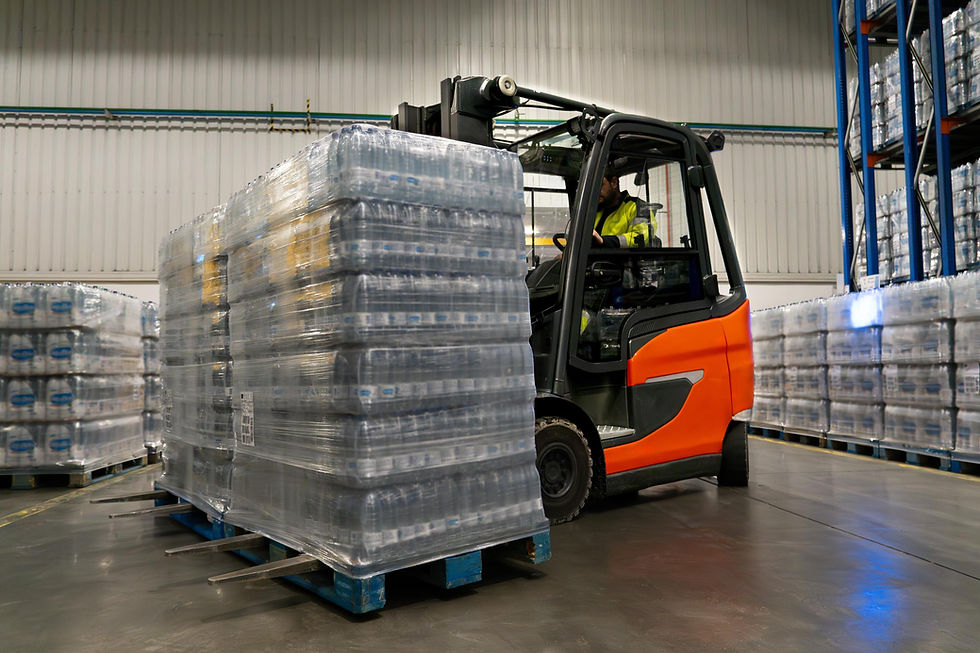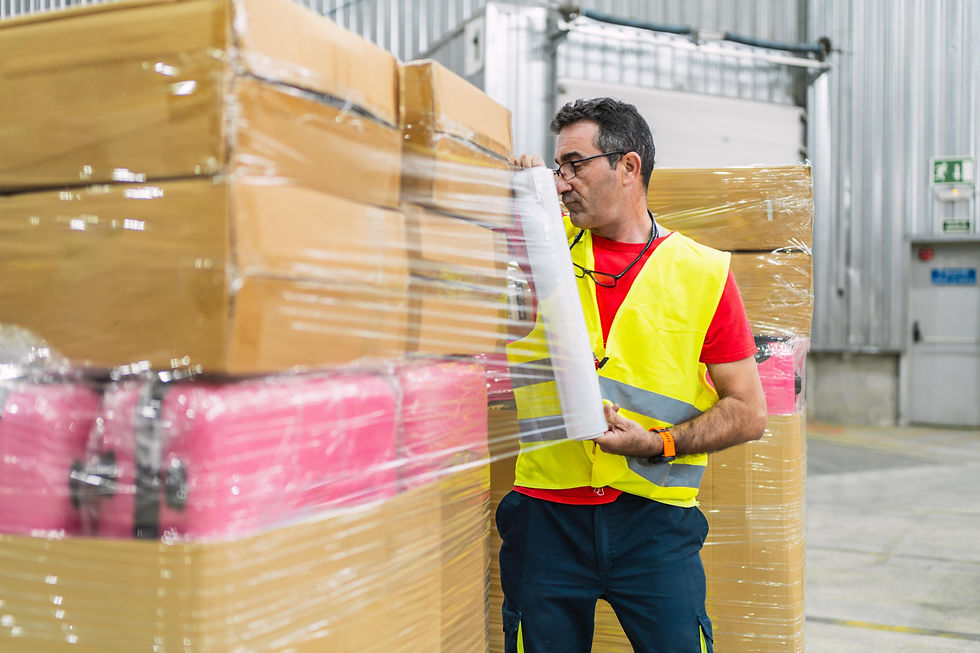What’s the Weight Limit of Different Types of Pallets?
- MMP Corporation

- Aug 7
- 3 min read
Managers and owners of warehouses and shipping depots always want to run a lean and smooth operation. Knowing the limits of your equipment is essential to accurately judge the capabilities of your warehouse or depot and keep your operation running as smoothly as possible.
Part of the essential data is knowing the weight limits of the pallets you use to ship your products. However, the quality and pallet types are not always within your control. Since pallets first became accepted as a standard shipping tool, many of the world’s shippers have observed a take-one-leave-one policy regarding pallets. For every pallet loaded with goods that a carrier delivers to a shipping dock, an empty pallet is taken back to their warehouse.
This policy benefits everyone in the supply chain by ensuring that everyone has enough pallets to ensure smooth operations. The policy also means that you often have a variety of pallets on your shipping dock.

Different Types of Shipping Pallets
The basic wood stringer pallets, which have been in use for decades, are still a popular choice for the majority of pallets in the supply chain. Relatively light and inexpensive, they have become a standard in the shipping industry.
However, several types designed for slightly different applications may also appear in your warehouse. They can be used in the same way that wood stringer pallets are, but can have slightly different weight limits. The weight limit standard we'll use is the dynamic load capacity. This is the recommended weight limit for pallets that will be in motion when carrying a full load. When wrapping your pallets with pallet stretch wrap before shipping, it's always preferable to wrap them using a heavy-duty stretch film, allowing the least movement of the load to prevent accidents while the load is in transit. The dynamic load capacities illustrate the weight and force a pallet can be subjected to when moving.
The three most common types of pallets in use today are:
Wood Stringer Pallets
This type of pallet forms the majority of the world's pallet supply. It's durable and long-lasting and can be made from soft and hardwood. The standard size of the pallet is 48 x 40 inches. The average weight is 30 to 70 pounds (13 to 32 kg). While wood pallets may be inexpensive and common, they have some drawbacks, including breakage and weight fluctuations due to moisture. The dynamic load capacity for wood stringer pallets is about 2,200 to 2,500 pounds.
Wood Block Pallets
Wood block pallets are heavy-duty and extremely sturdy. They’re often made with uprights flush against the corners and parallel and perpendicular stringers. They are built to carry more static and dynamic weight than basic stringer pallets. They’re roughly the same size and weight as stringer pallets but have a dynamic load capacity of 4,600 pounds.
Plastic Pallets
Plastic pallets are more consistent in weight as the plastic doesn't absorb moisture. They weigh around 50 pounds and are about the same size as wood stringer pallets. They were developed as a highly durable and more hygienic alternative to wood pallets. They're used in warehouses and shipping operations that handle pharmaceuticals and products where hygiene is considered. Their heavy-duty plastic construction gives them a dynamic load capacity of 5,000 pounds.
Other pallets exist, including double-face, double-wing, and solid deck pallets. However, shippers generally use the same dynamic load capacity of stringer pallets when calculating their weight limits.

Order High Quality M Stretch Pallet Film
MMP Corporation manufactures a line of M Stretch pallet wrapping plastic products that offer strong and resilient protection for loaded pallets, whether stored in a warehouse or shipped internationally. We offer a variety of rugged hand-stretch, machine-stretch and pre-stretched films for every application. Use M Stretch products to ensure your palletized loads are always safe and secure.
References:
How to Calculate the Maximum Weight Per Pallet – Retrieved on July 22, 2025, from: https://igps.net/how-to-calculate-the-maximum-weight-per-pallet/
How Much Does a Pallet Weigh and How Much Weight Can It Hold – Retrieved on July 22, 2025, from: https://www.freightrun.com/blog/post/how-much-does-a-pallet-weigh




